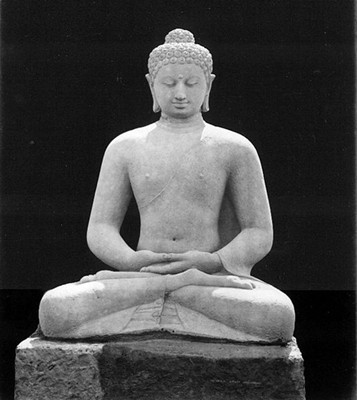Our sculpture, one of the earliest known, probably dates to the third century AD, when Gandhara was ruled by the Kushan kings of northern India, whose empire stretched from Kabul to Islamabad. It was a wealthy region, thanks to its position on the Silk Road - the trade routes linking China, India and the Mediterranean. From Gandhara the main route ran west through Iran to Alexandria in Egypt. Gandhara's prosperity and political stability allowed the construction of a great landscape of Buddhist shrines, monuments and sculpture, and further missionary expansion. It's something that will be a recurring feature through this week - the religions that survive today are the ones that were spread and sustained by trade and power. It's profoundly paradoxical: Buddhism, the religion founded by an ascetic who spurned all comfort and riches, flourished thanks to the international trade in luxury goods. With the luxury goods like silk went the monks and the missionaries, and with them went the Buddha, in human form, perhaps because such an image helps when you're teaching across a language barrier.












